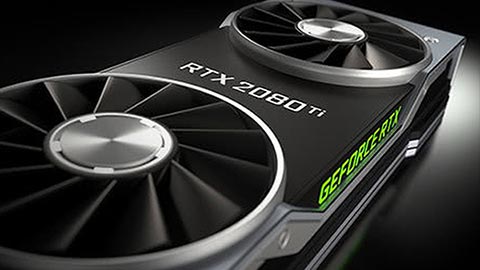How to Choose the Right Graphics CardDate: Tuesday, February 01 @ 02:28:02 UTC In today’s gaming ecosystem, graphics cards are at the forefront of user demand. Gamers are desperate to find a top-end card in a market where even the lower midrange segment is overly expensive due to silicone chip shortages and GPU mining. That said, let’s ignore the dire market situation for a moment and explain what considerations other than the price you should look at when buying a graphics card.
GPU: Let’s Start From ScratchYou’re probably familiar with basic computer terms such as the computer's central processing unit (CPU) and graphics processing unit (GPU). However, here’s a quick rundown on graphics basics. GPU makes sure your gameplay doesn’t stutter or freeze and that it loads textures smoothly by processing data together with your CPU and rendering the gaming environment on your display. As gaming is a highly intensive task, having a weak GPU will affect your framerates (FPS, or how many frames the GPU is capable of rendering per second) and thus give you a choppier gaming experience. Investing in the top-notch graphics card will future-proof your PC build and keep it ready to play even the most demanding games. Here are some of the main factors to consider when shopping around for the brand-new GPU: Space and ConnectivityProbably the first consideration on our list is motherboard and case compatibility. If your GPU is too large to fit in your case, it won’t get proper cooling, adversely affecting performance. Remember that most GPUs come in single, double, and triple-slot configurations, with gaming cards typically occupying two expansion slots. Next, check the ports; namely, you’ll have to connect your graphics card to your monitor. Modern monitors typically have HDMI, USB Type-C, or DisplayPort ports, while older ones might also support DVI or VGA. Most of the current configurations have three DisplayPorts and one HDMI output. Make sure to check the connections your card has - if it’s a newer one, you should be able to connect it through HDMI or the DisplayPort. Graphics Card MemoryAs with every other PC component, the main question you should ask yourself when choosing a graphics card is: how will you be using it? If you’re building your PC to play games or go for video game gambling, then the GPU will be your most important purchase. When performing graphic tasks of this kind, the more video RAM your card has, the more detailed textures it can process and render. If you’re playing graphic-intense games with a large amount of data or run multiple displays, do not even think about cards with less than 4 GB. More demanding games that run at 1080p resolution call for a minimum of 6 GB of RAM to be able to perform smoothly. Finally, if going for 2k or 4k gaming, a GPU with 8 GB or more is a must. Thermal Design PowerAnother basic specification that you should check before purchasing the graphics is the so-called TDP or Thermal Design Power. All GPUs generate a lot of heat and require powerful cooling technology to maintain seamless performance. The TDP expresses the ratio between the power that the GPU pulls and the heat it generates, indicated in watts. If the TDP is high, your graphics card will require more energy to operate and produce more heat. Knowing the power consumption of the card you're planning to purchase lets you determine if your power supply is AMD vs. NvidiaAlthough there are numerous third-party GPU manufacturers on the market, until Intel brings its own cards to the table, gamers have a simple choice: Nvidia or AMD-tech-based cards. Generally speaking, Nvidia and AMD are fairly evenly matched in the high end, with the RX 6800XT from AMD trading blows with Nvidia’s RTX 3080 and most market segments up to the lower budget class having a good card in both camps. That said, Nvidia does have better ray-tracing performance and a more advanced system of improving graphical fidelity through their patented AI-assisted Dynamic Learning Super Sampling (DLSS) system. Still, AMD has its own open-source answer for this, too, called FSR (Fidelity Super Resolution). The choice should really come down to price and availability, as both companies offer a wide range of excellent cards that are fairly evenly matched at the moment. Bottom LineIf you’re already breaking your piggy bank and heading into the store to purchase your new GPU, we’ll consider our mission successful. We’ll also be very happy for you because that means the graphics card prices have gotten to a level where such a decision makes sense. Either way, we hope our little guide has been helpful and that you’ll be able to get the best graphics card for your needs without having to plan how your grandchildren will cover the bill one day. |
This article comes from 360-HQ.COM:
https://www.360-hq.com
https://www.360-hq.com/article7098.html
